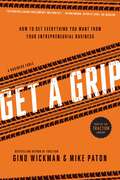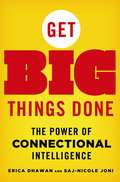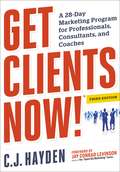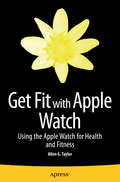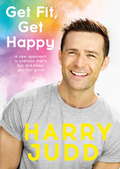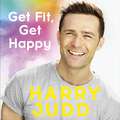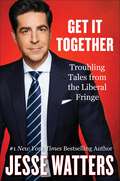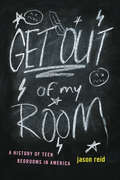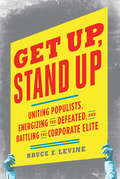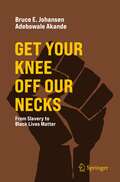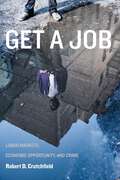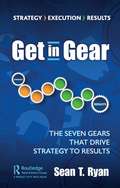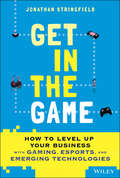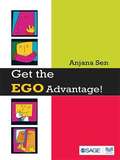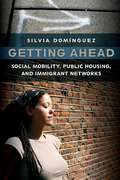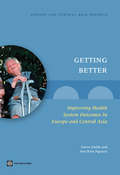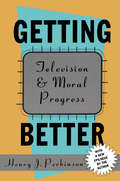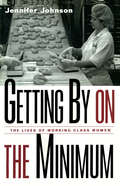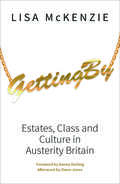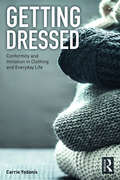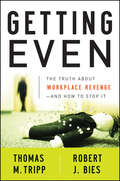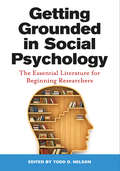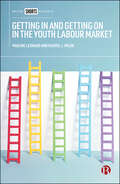- Table View
- List View
Gesundheitsökonomische Evaluation von AAL-Technologien: Eine Analyse am Beispiel von intelligenten Rollatoren in der häuslichen Versorgung (Vechtaer Beiträge zur Gerontologie)
by Mareike MähsUm die Informationsbasis über AAL-Technologien zu erhöhen, wird Wissen über die Effektivität, den Nutzen und die Kosten dieser Technologien benötigt. Es fehlen jedoch gerade für AAL-Technologien qualitativ hochwertige gesundheitsökonomische Evaluationsstudien. Die vorliegende Arbeit hat deshalb das Ziel, gesundheitsökonomische Evaluationsverfahren hinsichtlich ihres Einsatzes zur Abschätzung der Wirksamkeit und Wirtschaftlichkeit von AAL-Technologien zu untersuchen und eine geeignete Vorgehensweise zur Evaluationen von AAL-Technologien am Beispiel von intelligenten Rollatoren aufzuzeigen. Mareike Mähs zeigt, dass eine gesundheitsökonomische Evaluation von AAL-Technologien mit spezifischen Herausforderungen einhergeht. Dementsprechend sind vorhandene Verfahren an die Charakteristika der Technologie und ihrer Nutzerinnen sowie Nutzer anzupassen bzw. alternative Verfahren zu wählen. Aus diesem Grund wird ein Framework entwickelt, das eine Orientierung für eine strukturierte Vorgehensweise zur entwicklungsbegleitenden Evaluation von AAL-Technologien am Beispiel von intelligenten Rollatoren entlang deren Lebenszyklus bietet.
Get A Grip: An Entrepreneurial Fable . . . Your Journey to Get Real, Get Simple, and Get Results
by Gino Wickman Mike PatonIt's time to take your business to the next level. Eileen Sharp and Vic Hightower were frustrated. After years of profitable, predictable growth, Swan Services was in a rut. Meetings were called and discussions held, but few decisions were made and even less got done. People were pointing fingers and assigning blame, but nothing happened to solve Swan's mounting problems. It felt as though they were working harder than ever but with less impact. The company Eileen and Vic had founded and built for 10 years was a different place. It just wasn't fun anymore. Their story is not unusual. The challenges they were facing are common, predictable, and solvable. Get A Grip tells the story of how Swan Services resolves its issues by implementing the Entrepreneurial Operating System®. With the help of EOS, Eileen, Vic, and their leadership team master a set of managerial tools that allow them to get traction on their business, grow the business, and deliver better results for clients. The story of Swan Services is a fable, but the Entrepreneurial Operating System® is very real and has helped thousands of businesses worldwide. A complete entrepreneurial toolkit, EOS has helped thousands of businesses get to where they want to be. In Get A Grip, learn how Swan Services leaders learned to develop and commit to a clear vision, establish focus, build discipline, and create a healthier and more cohesive team. With characters and situations created from collective business experiences and stories, Get A Grip is a fable that will ring true for entrepreneurial leaders the world over and guide them to get their companies on track.
Get Big Things Done: The Power of Connectional Intelligence
by Saj-Nicole Joni Erica DhawanConnectional Intelligence unlocks the 21st-century secret to getting "big things done," regardless of who you are, where you live, or what you do.We typically associate success and leadership with smarts, passion and luck. But in today's hypercompetitive world, even those gifts aren't enough. Get Big Things Done argues that the game changer is a thoroughly modern skill called Connectional Intelligence. Virtually anyone can maximize his or her potential, and achieve breakthrough performance, by developing this crucial ability. So, what is it? Put simply, Connectional Intelligence is the ability to combine knowledge, ambition and human capital, forging connections on a global scale that create unprecedented value and meaning. As radical a concept as Emotional Intelligence was in the 90s, Connectional Intelligence is changing everything from business and sports to academics, health and politics by quickly, efficiently and creatively helping people enlist supporters, drive innovation, develop strategies and implement solutions to big problems.Can a small-town pumpkin grower affect the global food crisis? A Fortune 500 executive change her company's outdated culture through video storytelling? A hip-hop artist launch an international happiness movement? Or a scientist use virtual reality games to lower pain for burn victims? The answer, you'll read, is a resounding yes. Each of these individuals is using Connectional Intelligence to become a power player to get big things done.Erica Dhawan and Saj-nicole Joni's Get Big Things Done unlocks the secrets of how the world's movers and shakers use Connectional Intelligence to achieve their personal and professional goals--no matter how ambitious.
Get Clients Now! (TM): A 28-Day Marketing Program for Professionals, Consultants, and Coaches
by C. HaydenLearn the secrets professionals use to dramatically increase their client base by learning how to replace scattershot marketing and networking efforts with proven, targeted tactics.Knowing where to spend your marketing dollars was a lot easier in the days when the choices were commercials, magazines, and billboards. Now, life in twenty-first-century America has become one gigantic 24/7 commercial with no limit of ways to get your brand in front of your customers. Has marketing become just a game of throwing darts in the dark, or is it still possible to effectively target your audience?Using a simple cookbook model, the book helps you identify the ingredients missing from their current marketing activities, select the right strategies and tools from a menu of options, and create a completely customized action plan that can be fully implemented in only 28 days!In Get Clients Now!, you will learn:How to choose the best marketing tactics for their situation and personalityHands-on approaches for replacing unproductive cold-calling with the power of relationship marketingProven and effective online networking and prospecting, social media, and internet marketing strategiesAdvice on integrating online and offline tacticsTips for dealing with fear, resistance, and procrastinationNow in its third edition, Get Clients Now! has been updated with worksheets, exercises, all-new examples, and tried-and-true marketing practices for reaching new clients. Stop throwing a hundred fishing poles out into the vast ocean. Instead, learn where to most effectively take the net and scoop up your customers!
Get Fit with Apple Watch
by Allen TaylorGet Fit with Apple Watch is the concise introduction to the amazing new Apple Watch. It's the first book specifically focused on the Apple Watch's most important function: health and fitness.This book is for you if you are interested in health and are willing to make small lifestyle adjustments in order to enhance health and well-being. This book is also for you if you are a dedicated health junkie who already exercises on a regular basis and follows a healthy diet. The Apple Watch includes fitness apps that you can access right on your wrist while you are exercising, for instant feedback on how you are doing.You will learn how to use the Watch to avoid sitting for too long, to register a healthy amount of body movement every day, and how to get the most out of more strenuous exercise activities. All fitness and exercise-related built-in apps will be covered in detail, as well as leading third party health and fitness apps that have been specifically tailored to work with the Watch.Part I plus two appendixes give readers just what they need to know to understand all functionality of the Apple Watch to set up their Apple Watch, and what third-party apps are available (at time of publication). It's a great mini-book that will be appeal to readers who don't feel the need to buy an entire standalone introduction to the Apple Watch.Part II (the majority of the book) clearly explains the Apple Watch's fitness and health-tracking functions, but goes well beyond this by showing readers different ways to integrate these functions into their daily lives, regular workout routines, and with their iPhone and the leading third-party health and fitness apps. Plus, there's an entire chapter devoted to the Apple Watch Research Kit, explaining the benefits of the associated medical research apps and how users can participate in these world-changing programs, should they choose to.Veteran technology author Allen Taylor is also a participant in the Apple Watch Research Kit study in cardiovascular fitness conducted by Stanford University.
Get Fit, Get Happy: A new approach to exercise that's fun and helps you feel great
by Harry JuddGet Fit, Get Happy isn't about just transforming the way you look.It's about transforming the way you feel. Harry Judd is a member of the hugely successful bands McFly and McBusted who have headlined Hyde Park, notched up 19 hit singles - of which 7 went to number one - and 2 number-one albums. He is a much-loved former Strictly Come Dancing champion and has been crowned the nation's favourite ever winner of the show.And yet in spite of this success, there have been times when Harry has been prone to anxiety and other mental health issues. He's not alone. Today, anxiety, depression and other mental health problems affect more of us than ever before and we are all looking for ways to adapt, cope and survive the pressures of daily life.The one thing that Harry has turned to time and time again to redress the balance in his life is fitness. Now, using a combination of exercise and dance, Harry makes the mood-boosting benefits of fitness accessible for everyone. Young or old, male or female, small or large, tall, short, thin, fat or somewhere in the middle: anyone will be inspired by Get Fit, Get Happy. Without any need for expensive kit or lots of time, Harry's approach is fun, fast, free. Part memoir in which Harry tells the life lessons that he has learned, and part richly researched fitness plan to get you feeling more positive, Get Fit, Get Happy is a fitness revolution to help people find a little more happiness in their lives.
Get Fit, Get Happy: A new approach to exercise that's fun and helps you feel great
by Harry JuddGet Fit, Get Happy isn't about just transforming the way you look.It's about transforming the way you feel. Harry Judd is a member of the hugely successful bands McFly and McBusted who have headlined Hyde Park, notched up 19 hit singles - of which 7 went to number one - and 2 number-one albums. He is a much-loved former Strictly Come Dancing champion and has been crowned the nation's favourite ever winner of the show.And yet in spite of this success, there have been times when Harry has been prone to anxiety and other mental health issues. He's not alone. Today, anxiety, depression and eating disorders affect more of us than ever before and we are all looking for ways to adapt, cope and survive the pressures of daily life.The one thing that Harry has turned to time and time again to redress the balance in his life is fitness. Now, using a combination of exercise and dance, Harry makes the mood-boosting benefits of fitness accessible for everyone. Young or old, male or female, small or large, tall, short, thin, fat or somewhere in the middle: anyone will be inspired by Get Fit, Get Happy. Without any need for expensive kit or lots of time, Harry's approach is fun, fast, free. Part memoir in which Harry tells the life lessons that he has learned, and part richly researched fitness plan to get you feeling more positive, Get Fit, Get Happy is a fitness revolution to help people find a little more happiness in their lives.The fully illustrated Get Fit, Get Happy Fitness Plan can be found in the accompanying PDF to this audiobook. (P)2017 Hodder & Stoughton
Get It Together: Troubling Tales from the Liberal Fringe
by Jesse WattersCan the political be way too personal? What if most radical activists are trying to change their lives by changing the whole country? <p><p> When Jesse Watters set out to interview a few dozen radical activists to find out where their wild ideas came from, he discovered two things that shocked him: <p><p> First, he liked these people. <p><p> Second, their political positions were not primarily from books, teachers, or other activists. They originated in personal drama. Most of these people didn’t need legislation. They needed a therapist. <p><p> In Get It Together, the number one New York Times bestselling author and Fox News primetime host takes on Wokeism in a way no one else has. Through a series of (sometimes very) personal interviews with some of the most radical activists in the country, Watters discovers that these activists may be overlooking the most important change they need to make—within themselves. <p><p> From activists working for climate change salvation, Black supremacy, and social justice to a professional cuddler and a transwoman who identifies as a wolf, Watters shows how many well-intentioned Americans have bought into causes invented and run by people who are illogical, emotional, and ill-informed. <p><p> Through their stories, Watters uncovers common threads—childhood traumas, broken relationships, and a lack of introspection. What if the people obsessed with the end of the world are just hurting from how this one has treated them? What if that, rather than ideological disagreements, is the deeper root of our country’s political divide? <p><p> Funny, fresh, and fascinating, Get It Together is sure to spark important conversations, and to inspire us to see one another not as political opponents, but as real and broken human beings. <p> <b>New York Times Bestseller</b>
Get Out of My Room!: A History of Teen Bedrooms in America
by Jason ReidTeenage life is tough. You’re at the mercy of parents, teachers, and siblings, all of whom insist on continuing to treat you like a kid and refuse to leave you alone. So what do you do when it all gets to be too much? You retreat to your room (and maybe slam the door). Even in our era of Snapchat and hoverboards, bedrooms remain a key part of teenage life, one of the only areas where a teen can exert control and find some privacy. And while these separate bedrooms only became commonplace after World War II, the idea of the teen bedroom has been around for a long time. With Get Out of My Room!, Jason Reid digs into the deep historical roots of the teen bedroom and its surprising cultural power. He starts in the first half of the nineteenth century, when urban-dwelling middle-class families began to consider offering teens their own spaces in the home, and he traces that concept through subsequent decades, as social, economic, cultural, and demographic changes caused it to become more widespread. Along the way, Reid shows us how the teen bedroom, with its stuffed animals, movie posters, AM radios, and other trappings of youthful identity, reflected the growing involvement of young people in American popular culture, and also how teens and parents, in the shadow of ongoing social changes, continually negotiated the boundaries of this intensely personal space. Richly detailed and full of surprising stories and insights, Get Out of My Room! is sure to offer insight and entertainment to anyone with wistful memories of their teenage years. (But little brothers should definitely keep out.)
Get Up, Stand Up: Uniting Populists, Energizing the Defeated, and Battling the Corporate Elite
by Bruce E. Levine"Are Americans a Broken People?" Levine, a practicing clinical psychologist and frequent writer on political matters, asked in a 2009 web article, meditating on the problem of American political passivity in the face of attacks on their liberties and their economic well-being. In this work, he expands on that article, exploring the cultural and psychological reasons many Americans feel politically demoralized and considering the means of regaining the individual self-respect and collective self-confidence that are prerequisites for building mass democratic politics (based on a populism transcending right/left divisions) that can overcome the current control of the American political system by elites. Annotation ©2011 Book News, Inc. , Portland, OR (booknews. com)
Get Your Knee Off Our Necks: From Slavery to Black Lives Matter
by Bruce E. Johansen Adebowale AkandeThe death of George Floyd on May 25, 2020, and the ensuing trial of Derek Chauvin for murder a year later has rubbed raw the bloodiest stain on the United States’ history and its world reputation. The nine minutes and 29 seconds during which Chauvin’s knee crushed the spark of life out of Floyd was not unusual in the history of the United States. Before the U.S. Civil War, slaves were routinely beaten to death for disobeying orders or running away, then often lynched. In roughly two centuries, Blacks have achieved nominal freedom. But, as this book’s opening chapter and expert essays that follow indicate, freedom has been conditional based on inequity of wealth, social, and legal discrimination. None of this is new in the United States; what is new is the number of people rising up in protest, a figure in the millions around the world after Floyd’s murder.This book supplies a readable, scholarly account of recent issues in race and racism in the United States that will be useful for general readers, undergraduate students, and their professors. It will be useful in many fields, including Black studies, other ethnic pursuits, United States history, law, criminal justice, intercultural communication, et al. The work contains a powerful historical narrative followed by several important, essays on subjects including George Floyd’s murder, the rise of the Black Lives Matter movement and many other victims of systematic racism.
Get a Job: Labor Markets, Economic Opportunity, and Crime (New Perspectives in Crime, Deviance, and Law #11)
by Robert D. CrutchfieldAre the unemployed more likely to commit crimes? Does having a job make one less likely to commit a crime? Criminologists have found that individuals who are marginalized from the labor market are more likely to commit crimes, and communities with more members who are marginal to the labor market have higher rates of crime. Yet, as Robert Crutchfield explains, contrary to popular expectations, unemployment has been found to be an inconsistent predictor of either individual criminality or collective crime rates. In Get a Job, Crutchfield offers a carefully nuanced understanding of the links among work, unemployment, and crime. Crutchfield explains how people’s positioning in the labor market affects their participation in all kinds of crimes, from violent acts to profit-motivated offenses such as theft and drug trafficking. Crutchfield also draws on his first-hand knowledge of growing up in a poor, black neighborhood in Pittsburgh and later working on the streets as a parole officer, enabling him to develop a more complete understanding of how work and crime are related and both contribute to, and are a result of, social inequalities and disadvantage. Well-researched and informative, Get a Job tells a powerful story of one of the most troubling side effects of economic disparities in America.
Get in Gear: The Seven Gears that Drive Strategy to Results
by Sean T. RyanGet in Gear: The Seven Gears that Drive Strategy to Results (978-0-367-47149-1, 335422) Shelving Guide: Business and Management/Leadership/Strategy Only 10% to 25% of organizations get it right when it comes to achieving the expected results from their strategic planning. This means 75% to 90% of them are leaving results on the table and wasting their time on things that don’t matter. Almost a decade ago, a major steel manufacturer approached Sean Ryan and his team to help them think through how to better convert strategy to results. This was the catalyst for the seven gears that translate strategy to results found in Strategy-Execution-Results (SXR). Why Gears? Gears transmit energy. The more aligned they are and the less friction in their chain, the better they function. Leaders can easily identify the gear creating the most friction and then take action to better align that gear with the strategy generating better results. This creates momentum to improve the alignment and performance of other gears. This approach also emphasizes the ways everyone in the organization has some influence over every gear. Based on Sean Ryan’s consulting and training with organizations from start-ups to the Fortune 100, he’s found that these performance gears drive better results. You’ll employ them to align your goals with your strategy, create visible scorecards to know whether or not you’re on track, and identify the critical behaviors and actions that will drive performance. Readers will use this book to point their efforts toward getting meaningful results from their strategy. As noted in the Harvard Business Review: "The prize for closing the strategy-performance gap is huge: increasing performance by at least 50% for most organizations." After moving beyond their initial amazement of just how misaligned they were, they’ll be able to quickly apply the seven gears to sell better and more, drive down costs, improve quality and safety, and recruit talent for the future. In addition, there’s nothing in this book that has not been applied in actual business settings. While companies could use the SXR™ Framework to overhaul their organization top to bottom, they’ll also appreciate that they don’t have to change everything at once to make progress. Upon understanding each of the gears and how to create Follow-up and Follow-through, they’ll be able to improve any gear to start seeing strategic outcomes. You’ve got it in Gear, now Stay in Gear. Join the Strategy-Execution-Results Community: www.wwici.com/Gearheads.
Get in the Game: How to Level Up Your Business with Gaming, Esports, and Emerging Technologies
by Jonathan StringfieldAn essential guide for marketers and execs wishing to integrate their brands with modern games and esports In Get in the Game: How to Level Up Your Business with Gaming, Esports, and Emerging Technologies, decorated gaming and social media research and marketing executive Jonathan Stringfield delivers a roadmap to understanding and navigating marketing and business integrations into the gaming ecosystem: who plays games (and why), how modern games are created and oriented around the world of esports, and where brands can get involved with modern games. This book explains the breadth and depth of the gaming audience, describing the rapidly changing demographics of modern games and the various motivations gamers have for playing games. It also unpacks the history of gaming and how it has impacted the creative processes and output from the industry. Finally, it offers a practical guide for brands wishing to integrate themselves into new gaming environments, with an emphasis on maximizing success for marketers, developers, content creators, and fans. Get in the Game provides: A thorough introduction to why marketers and executives must pay closer attention to gaming, as well as existing roadblocks to understanding the gaming industry Comprehensive explorations of the psychology and motivations of gaming, and implications towards messaging and brand safety. Practical discussions of gaming as a competitive platform or streaming viewing experience. In-depth examinations of gaming ad placements, deep marketing integrations between companies and games, and future directions for the industry and how it relates to the emergence of the metaverse.Perfect for marketing strategists, brand managers, and Chief Marketing Officers, Get in the Game will also earn a place in the libraries of executives seeking to connect with the misunderstood yet largest segment in consumer entertainment.
Get the Ego Advantage!
by Anjana Sen'What is this Ego and why is there so much of it everywhere?' Our ego is like an invisible but tangible bubble which we project around ourselves, based on our own impression of our abilities and worth. This book shows how our abilities and sense of worth combine in the ego to determine our actions and interactions. Suffering toxic emotions while nursing ego-wounds, reacting and regretting can all be prevented. Get the Ego Advantage! outlines a simple approach that can easily be applied to real-life situations to help us understand the puzzling reactions we come across in other people. It also explores ego clashes in professional life, ways to balance individual and team identity, leadership, and issues such as rigid attitudes, prejudice and alienation. The author provides illuminating insights into complex concepts like self-esteem, true love, parental love, arrogance and narcissism. With Abu, an original cartoon character, to guide you through the book, it will be an entertaining as well as useful read for both the general and the professional reader.
Getting Ahead: Social Mobility, Public Housing, and Immigrant Networks
by Silvia DominguezHonorable Mention, 2014 Distinguished Contribution to Research Award presented by the Latina/o Sociology Section of the American Sociological Association Getting Ahead tells the compelling stories of Latin-American immigrant women living in public housing in two Boston-area neighborhoods. Silvia Domínguez argues that these immigrant women parlay social ties that provide support and leverage to develop networks and achieve social positioning to get ahead. Through a rich ethnographic account and in-depth interviews, the strong voices of these women demonstrate how they successfully negotiate the world and achieve social mobility through their own individual agency, skillfully navigating both constraints and opportunities.Domínguez makes it clear that many immigrant women are able to develop the social support needed for a rich social life, and leverage ties that open options for them to develop their social and human capital. However, she also shows that factors such as neighborhood and domestic violence and the unavailability of social services leave many women without the ability to strategize towards social mobility. Ultimately, Domínguez makes important local and international policy recommendations on issue ranging from public housing to world labor visas, demonstrating how policy can help to improve the lives of these and other low-income people.
Getting Better
by Son Nam Nguyen Owen SmithFifty years ago, health outcomes in the countries of Eastern Europe and Central Asia were not far behind those in Western Europe and well ahead of most other regions of the world. But progress since then has been slow. While life expectancy in the ECA region today is close to the global average, the gap with its western neighbors has doubled, and other middle-income regions have all surpassed ECA. Some countries in the region are doing better, but full convergence with the world's most advanced health systems is still a long way off. At the same time, survey evidence suggests that the health sector is the top priority for additional investment among populations across the region. The experience of high-income countries also suggests that popular demand for strong and accessible health systems will only grow over time. Yet these aspirations must be reconciled with current fiscal realities. In brief, health sector issues are a challenge here to stay for policy-makers across the ECA region. This report draws on new evidence to explore the development challenge facing health sectors in ECA, and highlights three key agendas to help policy-makers seeking to achieve more rapid convergence with the world's best performing health systems. The first is the health agenda, where the task is to strengthen public health and primary care interventions to help launch the "cardiovascular revolution" that has taken place in the West in recent decades. The second is the financing agenda, in which growing demand for medical care must be satisfied without imposing undue burden on households or government budgets. The third agenda relates to broader institutional arrangements. Here there are some key reform ingredients common to most advanced health systems that are still missing in many ECA countries. A common theme in each of these three agendas is the emphasis on improving outcomes, or "Getting Better".
Getting Better: Television and Moral Progress
by Bryan GreenEver since the fifties, when television became ascendent in American popular culture, it has become commonplace to bemoan its "bad" effects. Little or nothing, however, has been said about its "good" effects. With this observation, Henry Perkinson introduces his provocative and original analysis of television and culture. Rejecting the determinism inherent in most studies of the effects of television ("We are what we watch"), he insists that it is people that actively change culture, media having no agency to do so. Nevertheless, he argues that television did facilitate the changes we have made in our culture over the past thirty years.Perkinson describes how television helped us become critical of our existing culture, especially of the relationships that were commonly accepted between men and women, blacks and whites, politicians and voters, employers and employees, and between people and the environment. These criticisms have brought about dramatic changes in our social, political, and economic arrangements, as well as changes in our intellectual outlook. Since these changes came about through our efforts to eliminate or reduce discrimination, suffering, and injustice, Perkinson argues that our culture has become more moral in the age of television.In what amounts to a history of recent social change in America, Getting Better examines the role television has played in the rise of feminism, the black protest movement, the presidential elections, the Vietnam War, Watergate, environmentalism, religious fundamentalism, and the New Age movement. This book will be essential reading for students of communications and American culture, and for anyone who wants to make sense of the transformations of American life from the 1950s to the present. Even those who do not agree that things are "getting better" will find that Perkinson's analysis helps to make things more coherent.
Getting By on the Minimum: The Lives of Working-Class Women
by Jennifer JohnsonFirst published in 2002. Routledge is an imprint of Taylor & Francis, an informa company.
Getting By: Estates, Class and Culture in Austerity Britain
by Lisa MckenzieWhile the 1% rule, poor neighbourhoods have become the subject of public concern and media scorn, blamed for society's ills. This unique book redresses the balance. Lisa Mckenzie lived on the St Ann’s estate in Nottingham for more than 20 years. Her ‘insider’ status enables us to hear the stories of its residents, often wary of outsiders. St Ann's has been stigmatised as a place where gangs, guns, drugs, single mothers and those unwilling or unable to make something of their lives reside. Yet in this same community we find strong, resourceful, ambitious people who are 'getting by', often with humour and despite facing brutal austerity.
Getting Dressed: Imitation in Clothing and Everyday Life
by Carrie YodanisGetting Dressed introduces students to sociological concepts via the everyday decision of what to wear. Everyone has to get dressed. And what we wear creates our identity – how people define us and how we define ourselves. But getting dressed is not based on our individual choices and tastes alone. Rather, the process of getting dressed is shaped and limited by a range of social influences that lead us to imitate what others wear and reduces the range of options that are available for us to wear. From designers’ studios to the stores in the mall to our bedrooms, social constraints limit creativity and shape what we wear and how we express our identities when getting dressed.
Getting Even
by Robert J. Bies Thomas M. TrippTripp and Bies educate employees and managers about the right and wrong ways to deal with workplace conflict, specifically revenge. The authors have amassed dozens of lively stories, insights and counter-intuitive truths to bring to the book. Not only will managers and employees find this information useful and entertaining, but most readers will find applications in their home lives as well as in their work lives.The core argument is that revenge is about justice. Avenging employees are not unprofessional, out-of-control employees; rather, they are victims of offenses who feel compelled to seek justice on their own. The authors address specific questions, such as:What kinds of offenses result in revenge?Why do some victims respond more aggressively to harm than others?What role does the organization play in how victims respond to offenses?What's the best advice for managers who wish to prevent their employees from seeking revenge?Most employees experience the desire for revenge, and are ready to settle their own scores at work when management won't enforce justice.This book offers a model that sequences avengers' thoughts and behaviors, from the beginning of the conflict to its end. The model is grounded in scientific research and organizes disparate findings into a whole.
Getting Grounded in Social Psychology: The Essential Literature for Beginning Researchers
by Todd D. NelsonThis volume provides a fast and efficient way for undergraduate and graduate students to gain a solid understanding of the social psychology literature. Each chapter reviews a major subsection of research in the field, written by a leading social psychology researcher in that area. Coverage includes all the major empirical, theoretical and methodological developments in its subfield of social psychology. Beginning social psychologists, as well as those who may have emerged from their formal training with a less-than-solid grounding in the research literature, will find this volume invaluable. It is the book all social psychologists wished they had access to when they were getting grounded in the research literature!
Getting Healthy in Toxic Times: An ecological doctor’s prescription for healing your body and the planet
by Doctor Jenny GoodmanHow can we protect ourselves from the pollution, chemicals, and toxins that pervade our environment? Dr. Jenny Goodman connects the health of our planet with our own well-being, addressing the questions that very few doctors ask. We’re all too aware of the traffic pollution in the air, the chemicals in our water, the toxins in the soil (and therefore our food), and the electromagnetic energy emanating from our gadgets. If we can also understand how they affect our health, not least in the worrying rises in asthma and allergies, infertility, obesity, heart disease, behavioral and neurological disorders, as well as cancer, then we can take positive steps to avoid them. With the right information, we can: Safeguard ourselves with protective measures Minimize our interactions with pollutants Ensure our bodies have the right anti-toxin nutrients Take collective action to fight for our health and that of the environment Backed by the latest scientific and medical research, Getting Healthy in Toxic Times will empower you to look after your own health—and that of the planet. Let’s put the good stuff in and take the bad stuff out!
Getting In and Getting On in the Youth Labour Market: Governing Young People’s Employability in Regional Context
by Pauline Leonard Rachel J. WildeBased on up to date qualitative and ethnographic research, this book examines youth education-to-work transitions in the UK. Using the theoretical lens of a Foucauldian governmentality approach, the authors consider the ‘why’ and ‘how’ of youth employability training and demonstrate how different employability schemes planned and operationalised in diverse geographical and economic landscapes work in practice. The book examines and compares a range of employment entry route programmes and reveals the tension between employability and good quality employment, and the ways in which young people from varying social and regional backgrounds are positioned very differently within this.

